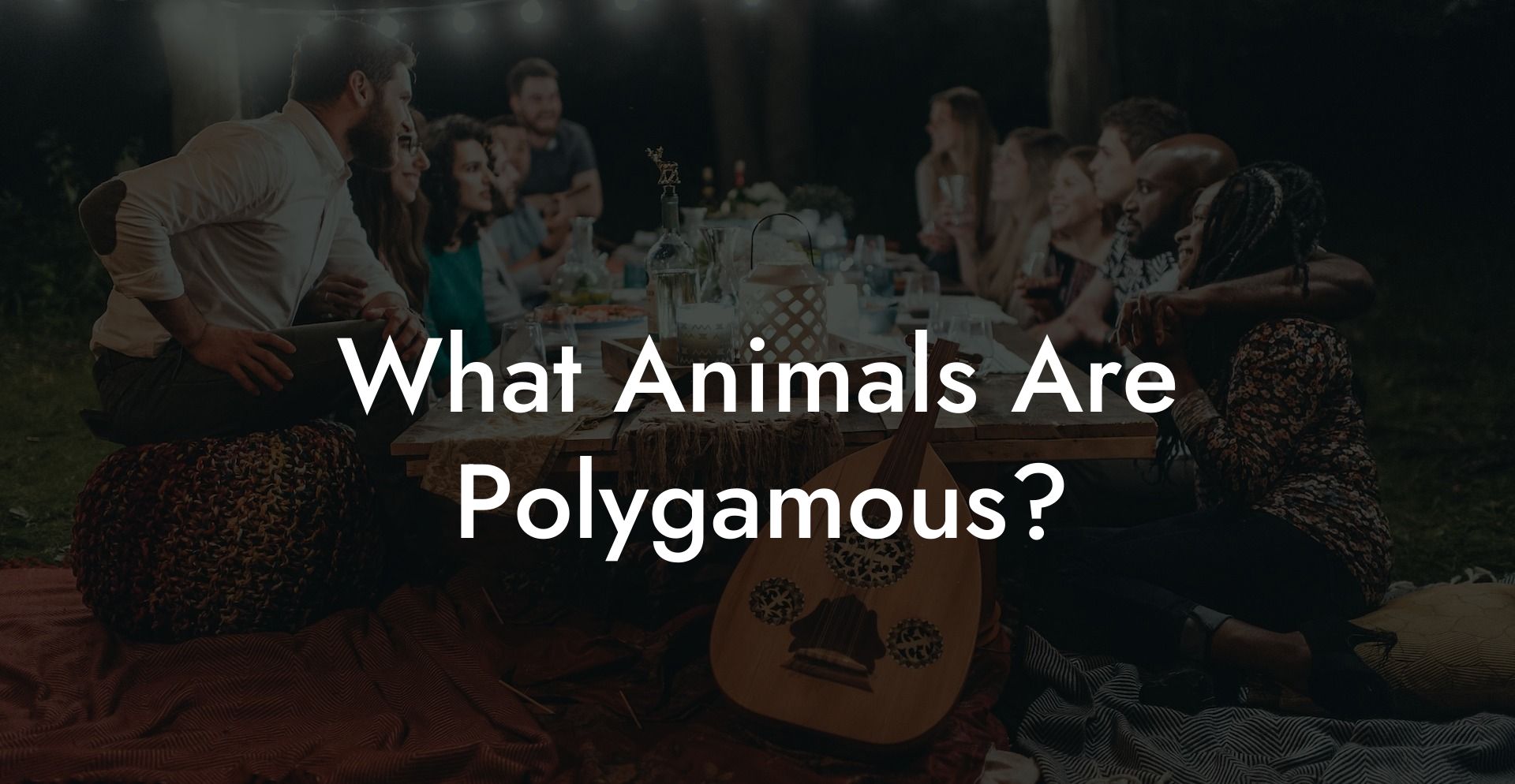From the beautiful depths of the oceans to the lush forests of the Amazon, the animal kingdom can provide us with some unexpected insights into love and relationships. As humans, we've evolved various ways to form our partnerships - monogamy, non-monogamy, and polyamory to name a few. Yet, the natural world has its own diverse methods of maintaining relationships, which are just as enchanting and perhaps a bit wilder than our own. While monogamy is a beautiful and well-known concept, have you ever wondered which creatures prefer polygamy? In this article, we delve into the world of polygamous animals, uncovering the surprisingly complex mating habits that keep their species thriving. So, sit back, relax, and join us as we embark on this fascinating exploration of polygamous animals.
Polygamy, an umbrella term covering polygyny (one male, multiple females) and polyandry (one female, multiple males), is a surprisingly common mating strategy throughout the animal kingdom. From mammals to insects, let's take a closer look at some of these fascinating polygamous creatures:
Lions
Starting off our list with the mighty King of the Jungle, lions embrace polygyny as their preferred mating strategy. Male lions' primary goal is to maintain their dominant status in the pride, which results in a harem of females that reside within the pride. These females share the responsibility for providing sustenance for the pride and raising the offspring, while their lion king defends his territory and protects his family.
Gorillas
In the lush forests of Africa, we'll find gorillas living within family units known as troops. These groups are typically polygynous, with one dominant silverback male leading and protecting his group of females and offspring. This silverback is the father of all the young in the troop, ensuring his genes are passed down through the generations. However, female gorillas occasionally mate with other silverbacks when given the opportunity, although the social structure remains primarily polygynous.
Elephant Seals
Plunging into the marine world, male elephant seals, known as beachmasters, gather a harem of females with their immense strength and size, protecting the females and their offspring from potential predators. These dominant males only get to mate for a short time due to their smaller reproductive window, leading to fierce and brutal competition among the beachmasters to attract and keep females.
Red Deer
Back on dry land, red deer are a particularly intriguing example of polygamy, as their mating season, or rut, revolves around the male deer, or stags, competing for mating rights with various female deer, also known as hinds. Notable for their sizeable antlers, the stags fight to establish their dominance and, subsequently, gain access to a group of hinds to mate with. The chaos of the competition is a thrilling sight to behold amidst the serene landscapes these deer call home.
Pipefish
Finally, we end our exploration of polygamy by delving into the world of the pipefish – small, elongated fish closely related to seahorses. Pipefish display a fascinating form of polyandry, in which the female mates with multiple males. The male then takes on the responsibility of bearing the offspring, carrying fertilized eggs until the young hatch. This strategy relieves females from the burden of pregnancy and allows them to seek out further mating opportunities quickly.
Example
Exploring the polygamous mating habits of animals can help shed light on the vast spectrum of relationship structures that exist in the natural world. These examples show that polygamy, when consensually executed, can have immense benefits for survival, genetic diversity, and offspring rearing. Indeed, the animal kingdom's unspoken motto seems to be that love comes in all shapes, sizes, and groupings!
Polygamy within the animal kingdom demonstrates the diverse ways that living beings connect with and support one another to ensure a thriving lineage. As we continue to learn from the natural world, we gain a greater appreciation for the limitless variations of love and relationships within it. If you've enjoyed exploring the fascinating world of polygamous animals, share this post with fellow animal lovers and relationship enthusiasts! And, as always, delve further into our other guides and articles at The Monogamy Experiment to discover more about the intricacies of modern relationships and the possibilities they hold.













